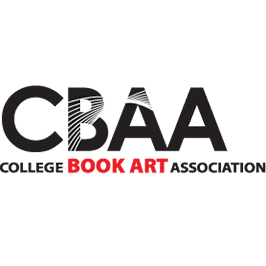This blog-post will discuss and celebrate the original contribution to knowledge that practice-based research circulates through considering my own journey of practice-based doctoral study, successfully completed in December 2016. Inspired by Barrett (2007) this blog-post will shift the critical focus away from the evaluation of ‘the work’ as a product towards an understanding of both studio enquiry and its outcomes as process.
The initial research question for my practice-based doctoral research project was to ask, “Is it possible to develop a more confident, self-conscious creative voice able to articulate one’s identity more clearly through the making of handmade artefacts?”. My original contribution to knowledge through this enquiry is the identification of the ways in which the exploration of identity through autoethnographic, creative and pedagogic methods encourages an expanded field of self-knowledge, self-confidence and sense of creative self.
Central to this study was my development of embodied, theoretical and material knowledge through learning the craft-based skill of hand bookbinding, and my emergent confidence to encase my visual practice in handbound artist’s books. The visual element of this practice-based PhD is a series of handmade artist’s books which contain collaged digital photographs of walks I took in my home town. The thesis evidenced that through learning these skills I have developed greater self-knowledge as an artist/designer/maker. Through the critical analysis of empirical and practice-based methods engaged in during this study, I argued that the artist’s book, as performative autoethnographic practice, evidences embodied knowledge of one’s identity and creativity by encasing the self within the book.
This blog-post seeks to open up a discussion to explore possible answers to the question Barrett and Bolt (2007) asked creatives, “What new knowledge/understandings [do]…studio enquiry and methodology generate that may not have been revealed through other research approaches?” (p. 1).
The term ‘process’ is of particular importance: my meaning here is that I will foreground in my discussion of the visual and embodied methods which I employed to create my artefacts what I have learned about myself, my identity, the culture of the place examined. In doing so I will argue that through being mindful of the process and performance of creativity I have found ways to support alternative views of myself, my past, my memories and the contested space of my youth. I suggest that the various visual and embodied methods I employed to create the books (photography; walking/movement through space; collage; bookbinding; and personal linguistic narrative) all add meaning to the artefacts themselves.
Barrett and Bolt (2007) argue that “knowledge is derived from doing and from the senses” (p. 1). They further state that this type of research is epistemologically, ontologically and pedagogically productive due to the necessity for the creative researcher to draw on “subjective, interdisciplinary and emergent methodologies that have the potential to extend the frontiers of research” (p. 1). They note that creative arts research, because of its potential to generate subjective and personal knowledge, has the ability to further an understanding of the experiential, problem-solving nature of learning and the variety of intelligences that are involved in the process of producing and acknowledging the acquisition of knowledge (p. 2). Sullivan (2009) suggests that research within the arts produces distinctive forms of enquiry (p. 55) and outcomes (p. 75) which are represented in various non-traditional forms and media. As artists are not social scientists, so, according to Sullivan (2009), the situatedness of visual arts research calls for an “acceptance of a diversity of approaches to research” (p. 75). It is Barrett’s (2007b) discussion of the importance of valuing ‘process’ in the creative research project that best reflects the focus of this thesis. She encourages creative researchers to shift critical focus away from evaluating creative work as product of a research enterprise, but rather to consider both the studio-based investigation and the outcomes as process (p. 135).
Like Sullivan (2009), Barrett (2007a) is concerned by the limitations on knowledge development and production when the outcomes of artistic enquiry are judged by social scientific standards of objectivity and factual evidence. Such expectations of outcomes ignore the features of dwelled experience from which situated knowledge emerges (Barratt, 2007b).

Elizabeth Kealy-Morris, A Walk of Twenty Steps, 2016. Hardbound concertina book containing full-colour inkjet printed digital photographs on 140gsm cartridge paper, 9cm x 14cm
Barrett, E. (2007a). "Experiential learning as practice in research: context, method, knowledge." Journal of Visual Art Practice, 6 (2), 115-124.
Barrett, E. (2007b). "Foucault’s ‘What is an Author’: Towards a critical discourse of practice as research. " In Barrett, E., & B. Bolt, eds. Practice as research: Approaches to creative arts enquiry. London, United Kingdom and New York, NY: IB Tauris. 135-146.
Barrett, E. & B. Bolt, eds. (2007). Practice as research: Approaches to creative arts enquiry. London, United Kingdom and New York, NY: IB Tauris.
Sullivan, G. (2009). Art practice as research: Inquiry in the visual arts. (2nd ed.). London, United Kingdom: SAGE.

